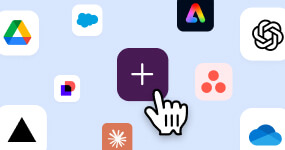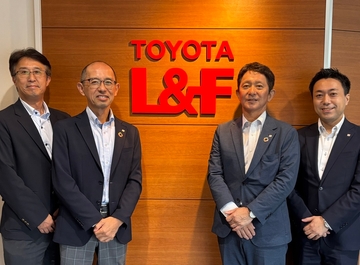Vercel について
世界中の人々が AI ネイティブのアプリとエージェントを構築する方法を再定義
Vercel は Frontend Cloud と AI Clouds により、高パフォーマンスのアプリケーションとエージェントを構築、拡張、保護するためのインフラストラクチャとツールを提供しています。毎月、280 万人以上のアクティブな開発者が利用するオープンソースの React フレームワークである Next.js を開発した会社でもある Vercel は、開発者の体験、迅速な反復、そのコミュニティとの緊密な連携に徹底的に取り組むことで、他社を引き離しています。
「Vercel の文化は Slack なしでは成り立ちません。この 2 つはあらゆる面でつながっています」
課題
成長は速さにとってマイナスではなく、プラスになることを証明
Vercel は、「速い」とはどういうことかの最前線を絶えず追いかけています。同社が成長するにつれ、リーダーは、優れた実績を挙げる従業員はどのようにして、ほかの従業員よりも早く仕事に慣れたり、製品をリリースしたり、顧客を理解したりしているのかを繰り返し何度も調査します。その目標は摩擦を取り除くことではなく、どうすれば速さを大規模に持続できるかを見つけ出し、それをさらに強化することです。
小規模のスタートアップから入社したあるエンジニアが、それについて最もうまく表現しており、次のように述べました。「Vercel では、会社の規模は前の会社の 10 倍になったにもかかわらず、これまでよりも早く製品をリリースできます」。これは、会社が速さに合わせて設計されているためです。自社で開発したプラットフォームを社内で使用したり、面倒な手続きを最小限に抑えたりしています。また、従業員は自律的にプロジェクトを選んで実施することができます。
このレベルの速さを維持するには、使用する人と同じ速さで動くインフラストラクチャが必要です。Vercel は、Slack を活用してチーム、データ、意思決定を 1 か所にまとめ、会社が大きくなっても会社全体で認識を共有できるようにしています。

「Vercel では、すべてが Slack で始まります。Slack は当社の運営にとってパワーグリッドのような存在です」
Vercel は Slack を活用して仕事をさらに先へ
減速することなく製品リリース、理解、反復を行う
Vercel がエージェントとウェブにインフラストラクチャを提供し、組織でアイデアが浮かぶと同時に構築できるようにしているように、Slack では Vercel 社にオペレーティングシステムを提供しています。エンジニアリングから市場開拓までの意思決定が Slack で行われます。サイロはなくなり、即座に認識を共有できます。
Slack は早くから Vercel の社内オペレーティングシステムとして使用されていますが(社内でメールは使用されていません)、使い方は劇的に進化しています。チャンネルは目的が明確で、公開されているため、情報を簡単に発見、参照、共有できます。リーダーは「ブレーンチャンネル」を使ってありのままの考えをそのまま投稿し、すべての従業員が経営陣の考えに直接触れることができるようにしています。デザインチームによって作成された、中心となる価値観それぞれを表すカスタムアイコンなど、数千個のカスタム絵文字によって Vercel の文化を強固なものにしています。
顧客と直接つながる
Slack は Vercel が外の世界とつながる場所でもあります。数百件の共有された Slack コネクトチャンネルにより、同社と顧客、パートナー、見込み客をつないでいます。「スタートアップのお客様も、フォーチュン 500 のお客様も、同じようにフィードバックを提供したり、ロードマップを作ったりすることができる、活気があり、継続的な顧客諮問委員会のような場所です」と Vercel で Product Partnerships のリーダーを務める Zack Ciesinski 氏は話します。
速さと効率を大規模に実現
毎月、従業員は Slack で 250,000 件以上の検索を行って必要な情報を見つけ、数十万ドル分の時間を節約しています。透明なコミュニケーションにより、年間 70,000 時間以上のミーティングが不要になっています。また、共有されたチャンネルを利用して、すでに参加している場所で顧客と話し合えるようにすることで、案件サイクルを短縮しています。
検索、ファイル共有、アプリ、インシデント対応、ワークフローで Vercel が Slack から得た効率化により、年間で合計数百万ドルの利益が生まれています。
仕事の流れに組み込まれたエージェント
同社独自の生成 AI アプリビルダーである v0 と Slack の連携により、この運用モデルはさらに進化し、「Slack が仕事を始める場所であるならば、そこにはエージェントも存在すべきである」という新たな認識が生まれました。
Vercel は v0 を Slack に組み込み、これにより、マルチプレイヤーバイブコーディングの概念がもたらされました。個別のウェブアプリで 1 人きりで実験するのではなく、Slack のスレッド内でチーム全体で一緒に反復するのです。「マルチプレイヤーバイブコーディングについて検討していて、Slack はこのような会話がすでに行われている場所であることに気づいた時のことを覚えています」と振り返るのは Partner Sales Engineer の Matt Lewis 氏です。「v0 はすべての人のためのツールです。開発者でも、デザイナーでも、アイデアを持っている人でも、アイデアから実際に役立つプロトタイプを作成したり、アイデアをさらにわかりやすく伝えたりすることができます」。
マーケティング担当者が「新しい発表用のランディングページを作成する」と入力すると、数分後にはチーム全員が Slack から離れることなく実際に機能するプロトタイプを見ることができます。デザイナーは、新しい色やメッセージを提案することで改良を加え、開発者は構造と機能について意見を出します。「スレッドを使うことで、チーム全員が最初の反復サイクルに参加できるため、より速く改善を重ね、役立つフィードバックを得ながら進めることができます」と Lewis 氏は話します。「Slack から離れることなく、その場所で仕事を完了することができます」。
Vercel は v0 を直接 Slack に組み込むことで、誰でもテキストプロンプトから即座にウェブ UI やアプリケーションを生成できるようにすると同時に、反復サイクル全体を可視化し、協力して取り組むことができるようにしました。
顧客との会話を変革
コーディングからアイデア優先に変わったことで、Vercel のエンジニアが顧客とやり取りする方法も変化しています。セールスエンジニアは、v0 を使用して、通話中であってもリアルタイムで機能のプロトタイプを作成できます。
「当社のセールスエンジニアは、お客様との通話中に、『デモを用意し、1 週間以内にあらためてご連絡します』と言わなくなりました」と Lewis 氏は述べます。「お客様との通話中にその場で構築しています」。
この機能により、これまで 1 週間後だったものが、すぐに実証ポイントを得られるようになり、顧客の信頼を高め、意思決定を早めることができるようになりました。
市場開拓ワークフローを自動化
Vercel は、エンジニアリング以外にも、Slack で独自のエージェントを活用して市場開拓オペレーションを拡張しています。この内部エージェントは、リード評価や見込み客の調査を自動化し、さらに、パーソナライズされたアウトリーチメールの下書きも作成します。10 人のチームではなく、営業担当者が 1 人いれば、Slack 内でプロセス全体を管理できます。そのプロセスでは、エージェントが調査結果を提示し、人間が確認、編集、承認して送信します。この自動化により、手作業が減り、営業担当者は価値の高い仕事に集中し、GTM チームはスピーディーかつ正確に大規模なオペレーションを行うことができます。

「Slack の効果は計り知れません。Vercel の文化の礎となる対応力と高い危機意識を強固なものにするのに役立っています」
今後の展望
Slack 内で誰でもアイデアからエージェントを作成できる未来を構築
Vercel にとって Slack は新しい働き方の基盤となるものです。エンジニアリングでも、製品でも、営業でも、作成するすべてのエージェントは、すでに仕事で使っていて、入力が会話形式で行われている Slack でアイデアとして始まります。
今後、Vercel はその内部エージェントをオープンソース化し、Slack 向けの v0 Marketplace アプリをリリースし、その AI SDK と Slack の Block Kit を連携させて、あらゆる場所の開発者がエージェントを自分で簡単に構築できるようにすることを計画しています。同社は、技術系の従業員も、非技術系の従業員も、すべての従業員が Slack から離れることなくアイデアを実際に役立つアプリケーションに変えることができる未来を思い描いています。
「Slack で構築することをとても楽しみにしています」と Lewis 氏。「ゆくゆくは Slack ですべてのエージェントを運用することになると思います」。














